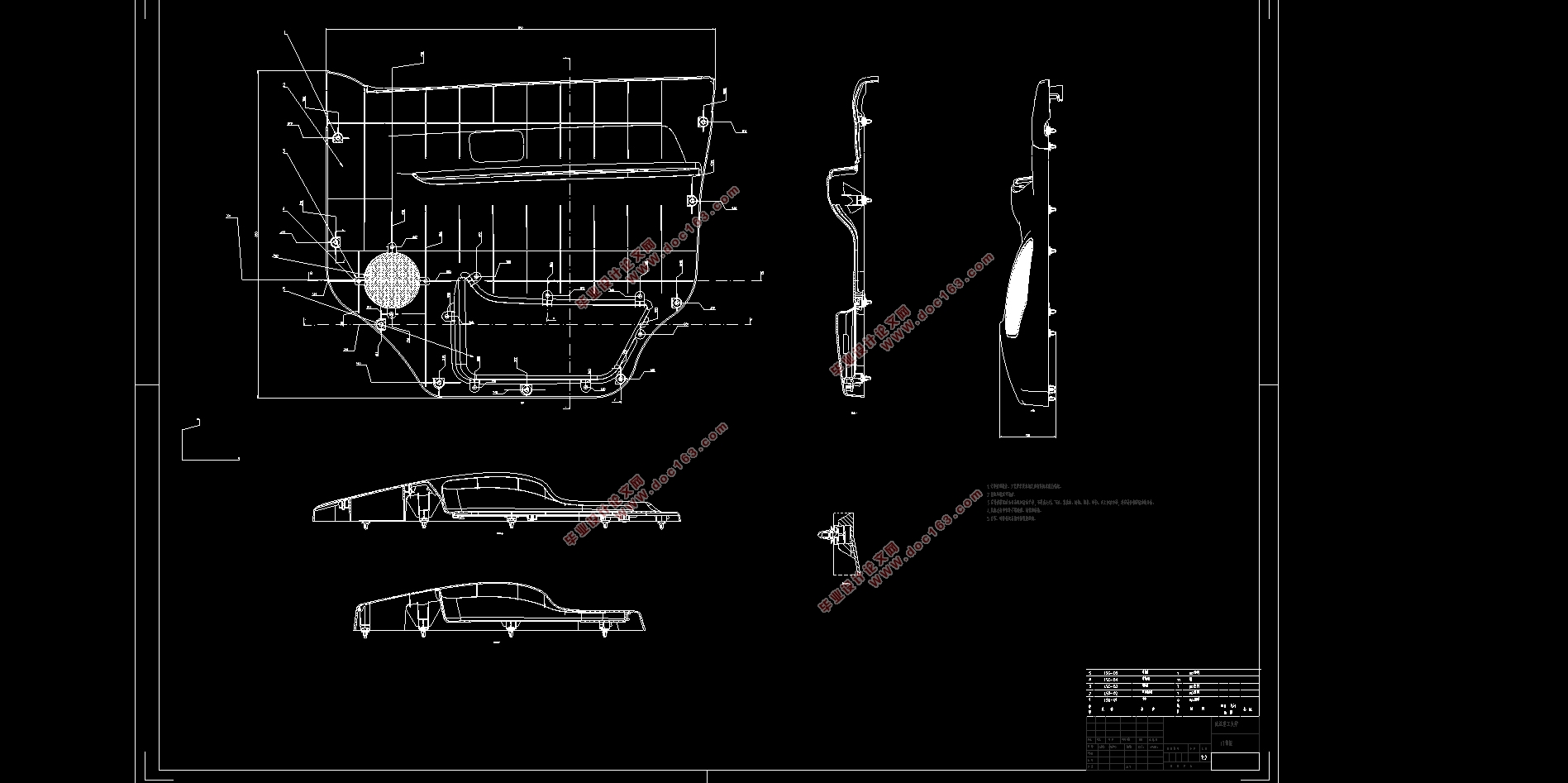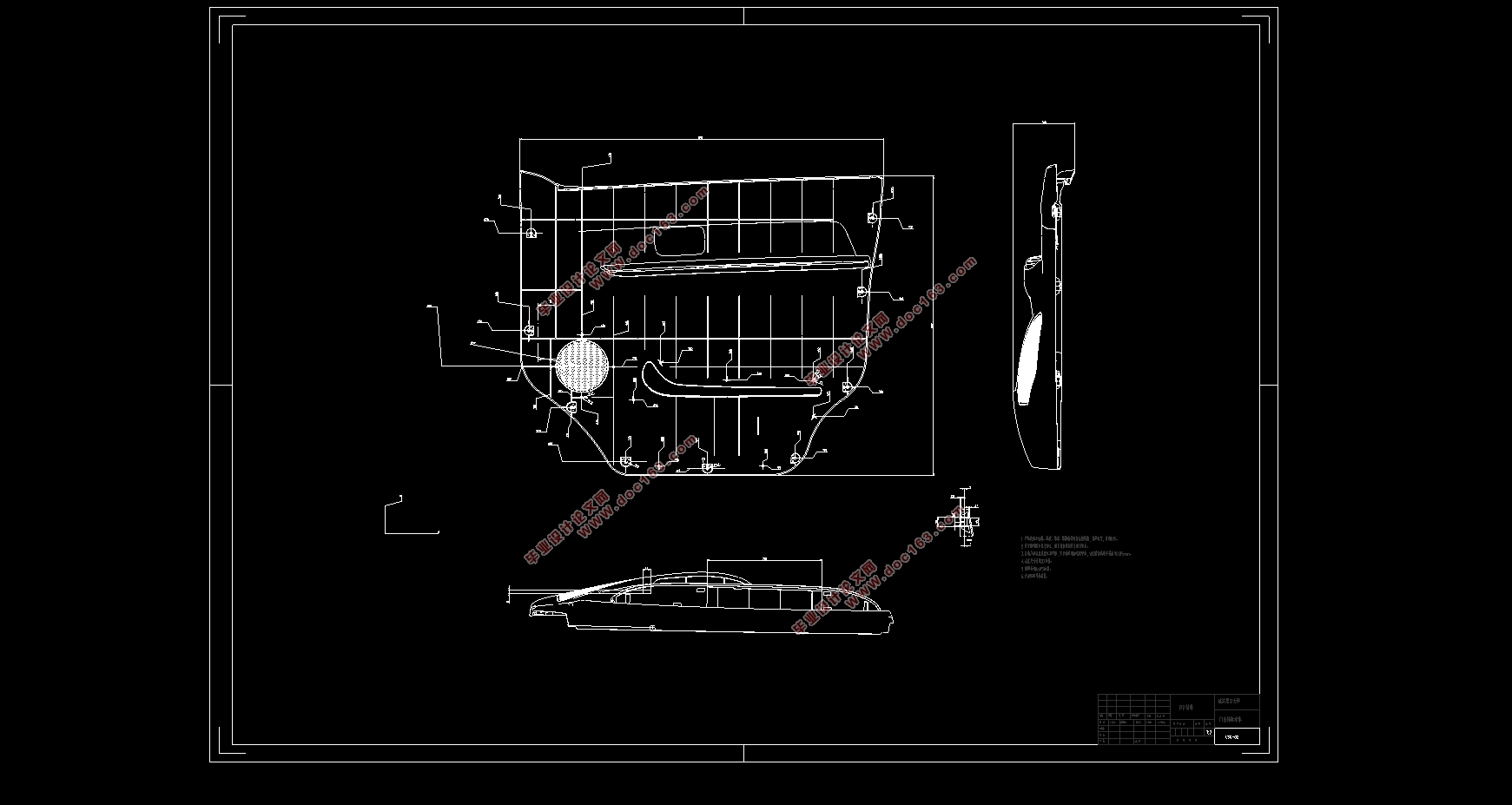某轻型货车门内饰板的轻量化设计(含CAD零件图装配图)

1.无需注册登录,支付后按照提示操作即可获取该资料.
2.资料以网页介绍的为准,下载后不会有水印.资料仅供学习参考之用.
密 惠 保
某轻型货车门内饰板的轻量化设计(含CAD零件图装配图)(任务书,开题报告,论文说明书10000字,CAD图4张)
摘 要
本文借助有限元分析软件Ansys Workbench软件首先对某轻型货车门内饰板的性能要求及模态进行了静力应变分析和模态分析。根据静力分析和模态分析所得到的应变云图与门饰板性能的要求进行分析比对,并根据分析比对的结果对门饰板进行轻量化设计。轻量化设计方式主要为对门饰板板件进行减薄,通过减薄的方式来降低门饰板的质量。在对门饰板进行轻量化设计后,再次对其进行分析校核,门饰板在轻量化设计以后,门饰板依然符合在最大应力的施加下,最大形变量在性能要求所允许的形变范围以内。
论文主要包括利用Ansys Workbench对门饰板模拟分析及利用三维模型软件CATIA对其进行轻量化设计的全过程。
本文的特色:利用有限元分析软件对门饰板进行模拟分析,并对门饰板进行轻量化设计优化门饰板结构。
关键词:门饰板;轻量化;模态分析;有限元分析
Abstract
In this paper, the finite element analysis software Ansys Workbench software is used to first analyze the static strain analysis and modal analysis of the performance requirements and modes of a light truck door trim panel. According to the requirements of static analysis and modal analysis, the strain cloud image is compared with the requirements of the performance of the door trim panel, and the door trim panel is lightly designed according to the result of the analysis comparison. The lightweight design method is mainly to reduce the thickness of the door trim panel by thinning the door panel. After the lightweight design of the door trim panel, it is analyzed and checked again. After the lightweight design of the door trim panel, the door trim panel still conforms to the deformation range allowed by the maximum deformation force under the maximum stress. Within.
The paper mainly includes the whole process of using the Ansys Workbench to simulate the door panel and use the 3D model software CATIA to lightly design it.
The characteristics of this paper: the finite element analysis software is used to simulate the door trim panel, and the door trim panel is lightly designed to optimize the door trim panel structure.
Keywords:door trim panel;lightweight;modal analysis;finite element analysis
[资料来源:http://THINK58.com]



目录
目录 1
第 1 章 绪论 1
1.1 研究背景及意义 1
1.2 国内外发展现状 1
第 2 章 门饰板模型处理 3
[版权所有:http://think58.com]
2.1 CATIA软件介绍 3
2.2 门饰板总成介绍 3
2.3 门饰板模型处理 4
2.4 本章小结 5
第 3 章 门饰板性能要求 6
3.1 门饰板性能要求 6
3.2 门饰板模态分析 9
3.3 本章小结 9
第 4 章 原门饰板强度分析 10
4.1 ANSYS软件介绍 10
4.2 有限元分析基本原理 10
4.3 有限元分析的基本步骤 11
4.4 门饰板有限元模型的建立 11
4.5 门饰板边界条件的确定 12
4.6 门饰板静力学分析 13
4.6.1 门饰板扶手位置Z向刚度分析 13 [来源:http://www.think58.com]
4.6.2 门饰板主储物袋抗拉强度分析 14
4.6.3 门饰板主储物袋抗压强度分析 15
4.6.4 门饰板刚度分析 16
4.6.5 门饰板上边沿垂直刚度 19
4.7 本章小结 20
第 5 章 门内饰板的轻量化设计 21
5.1 轻量化设计简析 21
5.2 基于尺寸优化的门饰板轻量化设计方案 21
5.3 轻量化设计后门饰板强度的校核 22
5.4 本章小结 28
第 6 章 总结与展望 29
6.1 总结 29
6.2 展望 29
参考文献 30
致谢 31
